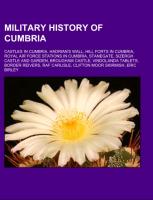- Start
- Military history of Cumbria
Military history of Cumbria
Angebote / Angebote:
Source: Wikipedia. Pages: 55. Chapters: Castles in Cumbria, Hadrian's Wall, Hill forts in Cumbria, Royal Air Force stations in Cumbria, Stanegate, Sizergh Castle and Garden, Brougham Castle, Vindolanda tablets, Border Reivers, RAF Carlisle, Clifton Moor Skirmish, Eric Birley, 34th Regiment of Foot, Muncaster Castle, John Clayton, Battle of Solway Moss, Hadrian's Wall Path, Appleby Castle, Vallum, Leahill Turret, Hadrian's Wall, Pike Hill Signal Tower, RAF Spadeadam, Carrock Fell, Castle Crag, Carlisle Castle, Rudchester Mithraeum, Brough Castle, Pendragon Castle, Hartley Castle, Gleaston Castle, King's Own Royal Border Regiment, Black Carts Turret, Mediobogdum, Rudge Cup, Battle of Arfderydd, Lowther Castle, Naworth Castle, Portgate, Sulpicia Lepidina, Staffordshire Moorlands Pan, Piel Castle, Military Way, Knag Burn Gateway, Greystoke Castle, Claudia Severa, Corbridge Lion, Corby Castle, High Head Castle, Penrith Castle, Military Road, Kendal Castle, Armathwaite Castle, Kirkoswald Castle, Cockermouth Castle, Illuminating Hadrian's Wall, Bewcastle Castle, Egremont Castle, Dalton Castle, Edmond Castle. Excerpt: Brougham Castle is a medieval building about 2 miles (3.2 km) south-east of Penrith, Cumbria, England. It is a Scheduled Monument and open to the public. Founded by Robert de Vieuxpont in the early 13th century on the site of a Roman fort, it sits near the confluence of the rivers Eamont and Lowther. In its earliest form, the castle consisted of a stone keep, with an enclosure protected by an earthen bank and a wooden palisade. When the castle was built, Robert de Vieuxpont was one of only a few lords loyal to the king in the region. The Vieuxponts were a powerful land-owning family in North West England and also owned the castles of Appleby and Brough. In 1264 Robert de Vieuxpont's grandson, also named Robert, was declared a traitor and his property was confiscated by Henry III. Brougham Castle and the other estates were eventually returned to the Vieuxpont family, and stayed in their possession until 1269 when the estates passed to the Clifford family through marriage. With the outbreak of the Anglo-Scottish Wars in 1296, Brougham became an important military base for Robert Clifford, 1st Baron de Clifford. He began refortifying the castle: the wooden outer defences were replaced with stronger, more impressive stone walls, and the large stone gatehouse was added. The importance of Brougham and Roger Clifford was such that in 1300 he hosted Edward I at the castle. The second Roger Clifford was executed as a traitor in 1322, and the family estates passed into the possession of Edward II, although they were returned once Edward III became king. The region was often at risk from the Scots, and in 1388 the castle was captured and sacked. Following this, the Cliffords began spending more time at their other castles, particularly Skipton Castle in Yorkshire. Brougham descended through several generations of Cliffords, intermittently serving as a residence. However, by 1592 it was in a state of disrepair as George Clifford was spending more time in southern England due to
Folgt in ca. 5 Arbeitstagen
